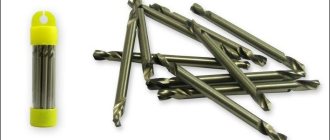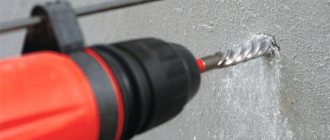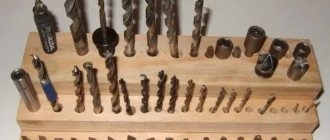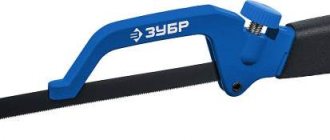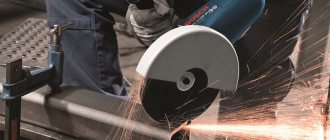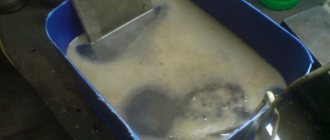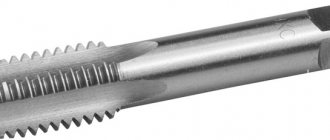The hammer drill is used both by professional builders and for home work. But even the best tool will not be able to cope with its task if the drill bit for the hammer drill is chosen incorrectly - without taking into account the surface material and its hardness. Most models are used to perform certain functions, but if you change the equipment, the hammer drill can easily serve as both a drill and a screwdriver. To replace attachments, a special cartridge is used - an adapter, which allows you to quickly change the functions of the device.
Drill and drill: what's the difference?
There are two main types of equipment for a rotary hammer. Drills are used in hammer drills. They make a hole with sharply sharpened ribs arranged in a spiral.
Drills of various diameters are used to pierce more durable foundations. Unlike simple rotational movements of the drill, this equipment also performs shock and vibration movements.
Drills are not suitable for use in a drill socket, and have their own design features:
- there is a landing shank at the end of the equipment,
- mounting grooves that fit only into the hammer drill socket,
- screw rod.
The latter feature allows the nozzle not only to make holes, but at the same time to remove the resulting debris out. The strength characteristics of the drill are added by a pobedite or diamond tip.
How to combine a hammer drill with a regular drill
In drills, torque comes from the electric motor shaft to the chuck that secures the drill, and only the direction or speed of rotation changes.
The shaft and drill rotate together. The clamp is a collet device that secures the shank. Rotary hammers use a universal chuck, which is used both for drilling and when chiselling is necessary. In it, torque is transformed into reciprocating movements or rotation. For this reason, hammer drill chucks must be able to withstand both axle load and torque.
Under certain operating modes, these loads can act simultaneously, therefore the use of simple collet clamps, like a drill, is unacceptable.
The device of the adapter chuck for the drill
The drill shank, inserted into the clamp, has a cylindrical or conical shape. It has two pairs of grooves running along its entire length - two open and two closed.
The typical design of the cartridge is as follows:
- a splined bushing mounted on the motor shaft;
- sleeve ring;
- a cone-shaped spring supporting the ring;
- retaining balls placed between the sleeve and the ring;
- a casing that covers the entire assembly.
The drill is secured when the shank enters the sleeve. In this case, the open grooves coincide with the splines, and the balls supporting the ring fit into hidden holes. As a result, the drill is prevented from falling out of the clamp; torque is transmitted from the shaft through splines. The heel of the shank receives impulses from the hammer hammer.
Pobedite or diamond tip: which is better?
Which drills are best to choose are determined depending on what the surface being treated is made of. The rod of any equipment is crowned with a tip or solder. It has edges of various configurations and hard alloys are used for its manufacture.
The quality of drilling, wear resistance of the drill, and the speed at which it punches holes are determined by soldering. Therefore, it is better not to use a concrete drill bit for a hammer drill if you plan to work with marble tiles or masonry. But the diamond tip can handle both heavy and reinforced concrete.
Pobedit brazings are divided into three strength classes:
- soft ones are inexpensive, they can choose low-grade concrete and brickwork for the hole;
- medium-strength ones are most often used in everyday life for minor repairs and amateur construction. Tips of this hardness cope well with concrete floors;
- High-strength types of drills can compete with their diamond counterparts, but not on reinforced concrete bases.
All pobedit tips (if used as intended) are designed for repeated use without sharpening.
Types of drills for metal
Screw
This is the most common design for all three types of drills. Screw drills for metal are a cylinder with 2 – 4 helical spiral grooves. On the one hand, the drill is sharpened and has a cutting edge. It also has a sharpened end. For soft metals such as aluminum, drills with a sharpening angle of 90° - 100° are used, for medium hardness 110° - 120°, and the densest and thickest metal is drilled with a nozzle with a sharpening angle of 130° - 140°.
Screw drills for metal are usually made with cylindrical shanks for a drill chuck, but are also found in nature with a hex shank for a quick-release chuck.
Stepped
This is a cone-shaped drill with cutting steps of different diameters. The thickness of the metal that can be drilled is determined by the height of the individual step. Step drills can drill sheet metal from 1 to 8 mm. They usually have a cylindrical shank, making them easy to use with a jaw chuck.
The main advantage of a step drill is its ability to gradually widen the hole. This results in perfectly neat edges. Previously, such work could be done using several screw drills of different diameters. Now this can be done without changing tools. On average, the cost of such a drill is 600 - 800 rubles.
Milling
On the side edges of such a drill there are sharp notches that can be used to mill metal. You can drill a hole that is not ideally shaped, for example, for some kind of oblong fastener. Of course, a hand router will not replace such a drill, but it is quite capable of performing small jobs.
The disadvantage of using such drills is the complexity of the work and the possibility of damaging the drill. The fact is that when milling, an excessive load is created on the drill bearings, which is why they quickly fail. But if you consider that at home a milling drill is not used so often, then you can ignore this drawback.
What types of drills and drills are there?
If a home craftsman often needs to use a drilling tool, then it makes sense to look at sets of drills for a rotary hammer in the store. With such a purchase, the master will be ready to work with any surface.
The set contains nozzles with different types of shank and all shapes of the working part. Equipment can be divided into two broad categories: through and through.
The first ones choose the base material, gradually going deeper inside. The second type destroys (chips off, knocks off) an impressive part of the working surface. Within each group there is an additional breakdown into species.
Types of drills for hammer drills
Tips come in the following types:
- chisel;
- drill;
- lance or chisel lance;
- channel drill;
- crown.
A drill, similar to an ordinary twist drill, is used to make round holes, usually for a dowel or dowel-nail. In construction stores it is often defined as a drill bit for a hammer drill.
The chisel is designed for removing plaster, tiles, tiles or any other worn-out coating. It is convenient for them to carry out dismantling by simply prying up the material to be removed.
The lance is convenient to use when scoring or punching holes in concrete or other hard surfaces. The tool has a noticeably larger diameter than a drill and is characterized by increased “bounceability”. This tip is used when it is necessary to make larger holes, which can be achieved using a drill.
A channel drill is indispensable when you need to make grooves for wiring or installing interior items: guides for plasterboard structures, fastening sliding or false walls.
The crown is used to make holes for placing switches and sockets. Modern drills for rotary hammers are available in any size, among other things, for installing these electrical devices.
- alloyed;
- high-speed;
- carbonaceous.
For processing hard materials, drills are equipped with heavy-duty soldering.
Based on the type of working tip, drills are classified into the following types:
- Screw type, designed for making deep holes. Thanks to the spiral design and significant torque, crumbs and dust are removed, the load on the hammer is reduced, and the work time is reduced.
- Drill with a slight slope of working chutes. Used for work that requires little force, for example for making many shallow holes in relatively soft materials.
- A drill with a significant inclination of grooves, characterized by high drilling speed. The load on the hammer drill from such drills is higher than when using auger drills. Designed for making deep holes.
- Drills with one or more spiral grooves or grooves of a special shape. This tip ensures high drill stability, balanced rotation, and reduced vibration load on the hammer drill.
No less important is the shape of the rear part of the drill, clamped in the chuck - the shank.
The most commonly used:
- SDSplus. Used for low and medium power hammer drills. The depth into the cartridge is 4 mm, the size of the “tail” is 10 mm.
- SDS is a special guide system. The drill is held in the chuck by clamps. The diameter of the tail part is 10 mm.
- SDSmax. Format used in a powerful professional tool. The diameter of the shank is not 10, but 18 mm, the recess into the chuck is 9 mm.
- SDStop. Used primarily in BOSH rotary hammers. The tail size is 14 mm.
- SDSquick. It is also a development and is used in instruments of this brand only.
Screw attachments
The category of the most used attachments is represented by auger drills. Their cutting edge is twisted into a spiral, and the tip is additionally hardened.
If you need to make a deep hole in a matter of seconds, these are the nozzles you use. They are purchased to hang a shelf, sconce or TV bracket.
The best drill bits for a concrete hammer drill: rating
Listed below are the most popular drill bits for household and industrial hammer drills today. Thanks to this rating, you can choose effective and durable blast holes for them.
DeWALT EXTREME 2 DT7935B-QZ
Set of 10 drills (USA) in a convenient case with a latch. The drills have an SDS-plus shank, a diameter of 5-12 mm and a length of 110-160 mm. They are designed to work with stone, concrete and brick. Capable of working flawlessly for a long time with proper care.
Intended for household use. It is worth noting that this set is inexpensive.
Set DeWALT EXTREME 2 DT7935B-QZ
BOSCH 3.5×50/110 mm
The drills are distinguished by high quality workmanship and durability. This drill with an SDS+ shank allows you to quickly carry out construction and repair work in a house or apartment.
The cutting segments of the drill bit are made of high quality, so it allows you to make holes in stone, brick and concrete without any problems.
BOSCH 3.5×50 – 110 mm
Granite 425100 25/1000 mm
Has an SDS-plus shank. It uses four cutting segments and a double spiral for high-quality dust removal. It is made of high-alloy steel, and is subjected to hardening. Thanks to this, the service life of the product is significantly increased.
For reference! Due to high demand, it is difficult to find on the domestic market.
Granite 425100 25/1000 mm
Makita D-00050 /100 mm
This drill is designed for household power tools with SDS-plus chucks. It uses two carbide cutting edges, so the process of drilling the material is more uniform and faster.
The drill tip is well centered, due to this, drilling takes place exactly in the given direction. Thanks to the use of this tool, vibration is practically not felt during drilling.
Makita D-00050 −100 mm
Granite Quadro-X 845570 45/570 mm
Designed for industrial hammer drills with SDS-max chucks. Its cutting bit consists of four cutting parts made of high-alloy metal. Thanks to this, the drill has increased wear resistance.
It has a double spiral, due to which the destroyed material is quickly discharged out.
Granite Quadro-X0 mm
Thanks to this rating, the reader will no longer have the question of which drill bits are best for rotary hammers today.
With the help of this article, you can quickly select the optimal drill for a household and industrial hammer drill, and then at any time make the required number of holes in walls, floor slabs and other structural elements of buildings and structures. The most important thing in the drilling process is to adhere to drilling technology and safety precautions so as not to get injured or break the tool used in the work.
Spiral drills
This type of consumable is indispensable when you need to make a long passage of large diameter. If you need to stretch a cable through load-bearing partitions from one room to another, choose a spiral drill.
The best of the best
If we consider specific manufacturers, it is worth noting Bosch. This company produces the best tools chambered for SDS-max, of which it is the inventor. Among others, German DeWALT drills perform excellently, which are excellent for household and professional use.
If we consider drills for more specialized purposes, then Makita comes to mind. The flat drills from this company cannot be called the best, but the breaking ones show excellent performance even in harsh working conditions.
Among public sector employees, it is worth highlighting Elitech. The company makes excellent drills for home use. However, you should not rely on them when processing dense rocks.
Do not forget to lubricate the shank after purchasing the tool. It is advisable to use lubricant of the same brand as the drill. However, this is not critical.
Crowns
When working with concrete foundations, it is often necessary to use crowns. Such equipment is needed when laying electrical wiring and engineering systems.
To select a round hole of large diameter (for example, for a socket), purchase a spiral-shaped rod with an attachment. The crown has incisors along the edges, making it easy to penetrate into concrete.
Possible problems
A common problem is the drill bit jamming in the equipment chuck. To extract it, you should choose one of several convenient methods:
- the free end of the drill is clamped in a vice and lightly tapped with a hammer with a rubber gasket on parts of the clamping mechanism;
- The hammer drill chuck is placed in a bowl of gasoline and the drill is subsequently removed;
- if a jam occurs in a key-type clamping mechanism, you need to turn the key counterclockwise or add a drop of machine oil;
- a stuck drill in a quick-release chuck is removed by tapping parts of the chuck counterclockwise;
- Complete disassembly of the equipment is possible if none of the methods help.
To learn how to clamp regular drills into a hammer drill, see the following video.
How are drills marked and what sizes of nozzles are there?
Before inserting a drill into a hammer drill, you should make sure that you purchased a consumable with the type of shank recommended by the manufacturer (that is, all holes and shapes match the mount). Professionals advise choosing shanks with SDS fastening. It makes it possible to quickly change equipment and comes in 5 types:
- SDS plus is distinguished by the presence of 4 grooves with a diameter of 10 mm. The drills themselves can have a diameter of at least 0.4 cm and a maximum of 2.6 mm. They work great on concrete bases;
- SDS has 2 grooves, diameter 10mm;
- SDS max has five slots and is used for fastening powerful drills in rotary hammers for professional work. The diameter of the equipment increases from 2 to 8 cm;
- SDS top is distinguished by the presence of 4 grooves with a diameter of 1.4 cm. The size of the nozzles for this mount varies from 1.6 cm to 2.5 cm. This equipment is used in medium-weight hammer drills.
- The longitudinal projections in the SDS quick mount seem to have affected their popularity. They are rarely found on store shelves.
In addition to the type of fastening, the type of work to be done should influence the purchase of a particular consumable. Drill sizes for simple household work are limited to 6-10 mm.
Choosing a blade for a hacksaw for metal: rating the best blades, choosing and using the best toolReview of diamond bits for concrete: subtleties of choosing and using tools for high-quality drilling
The best concrete drills for drills and hammer drills: tips for choosing, structure and types of tools
If you need to screw an anchor bolt into the wall, you will need to take equipment of at least 2 and no more than 20 mm.
Another indicator of the drill size is the length of the working part and the main length. For private construction, where thick partitions are almost always erected, both a modest 10 cm nozzle and professional meter-long equipment may be required.
The walls in apartments are much thinner, and for standard repair work a 6 mm drill with a length of 110 mm will be sufficient.
To summarize, we can say that the choice of consumables for a hammer drill is made after assessing the scale and complexity of the upcoming work.
Drilling recommendations
Drilling concrete has its own characteristics and is very different from working with metal, wood or plastic. The reason for this is the heterogeneous composition of concrete. Thus, its structure contains mineral inclusions of various fractions, metal reinforcement and technical cavities.
When drilling concrete, you need to follow a few simple recommendations:
- Use drills or drill bits that are appropriate for the tool (drill or hammer drill). In order not to make mistakes, you need to use the instructions supplied with the tool or find its specification on the manufacturer’s website.
- To drill pure concrete, you need to use either drill bits with Pobedit cutters or drill bits for a rotary hammer (with the same Pobedit inserts).
- If you plan to drill ceramics or stone such as marble, then you need to use diamond-coated drills or core bits. You need to work at low speeds, take breaks to cool the working part (naturally - with air, without any liquids). In addition, you need to regularly remove crushed material from the hole using a construction vacuum cleaner.
- If you encounter a large stone in the thickness of concrete, you need to crush it using some kind of hammer and only then continue drilling.
- When drilling a hole in concrete, you need to take into account that its diameter 2-3 mm greater than the diameter of the drill. The reason for this is the inevitable beating and, accordingly, chipping of the hole walls.
- When using conventional drill bits in a drill, they should not make impact movements - this will damage their cutting part. This recommendation also applies to diamond-coated drills.
- Drill bits for concrete hammer drills and diamond-coated bits are distinguished by high hardness and at the same time brittleness. Therefore, they need to be drilled at medium speeds without overheating and under no circumstances should shock loads be allowed.
- In no case should you make holes or recesses using a hammer drill on the edge of walls or ceilings - this can lead to chipping of the surface (concrete, for all its hardness, is very fragile and in such places, impact loads can damage it uncontrollably)

